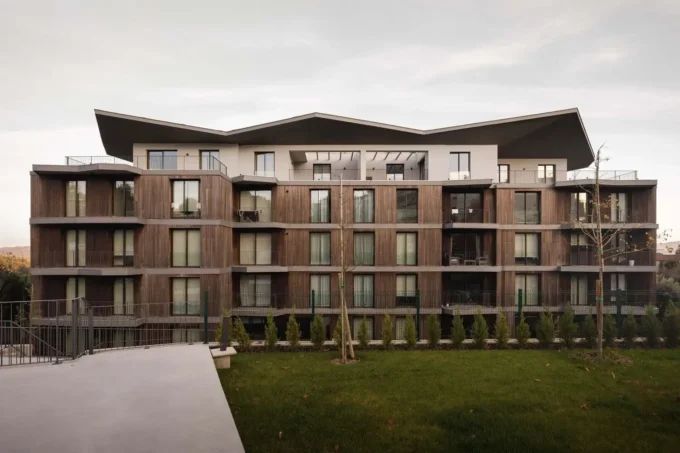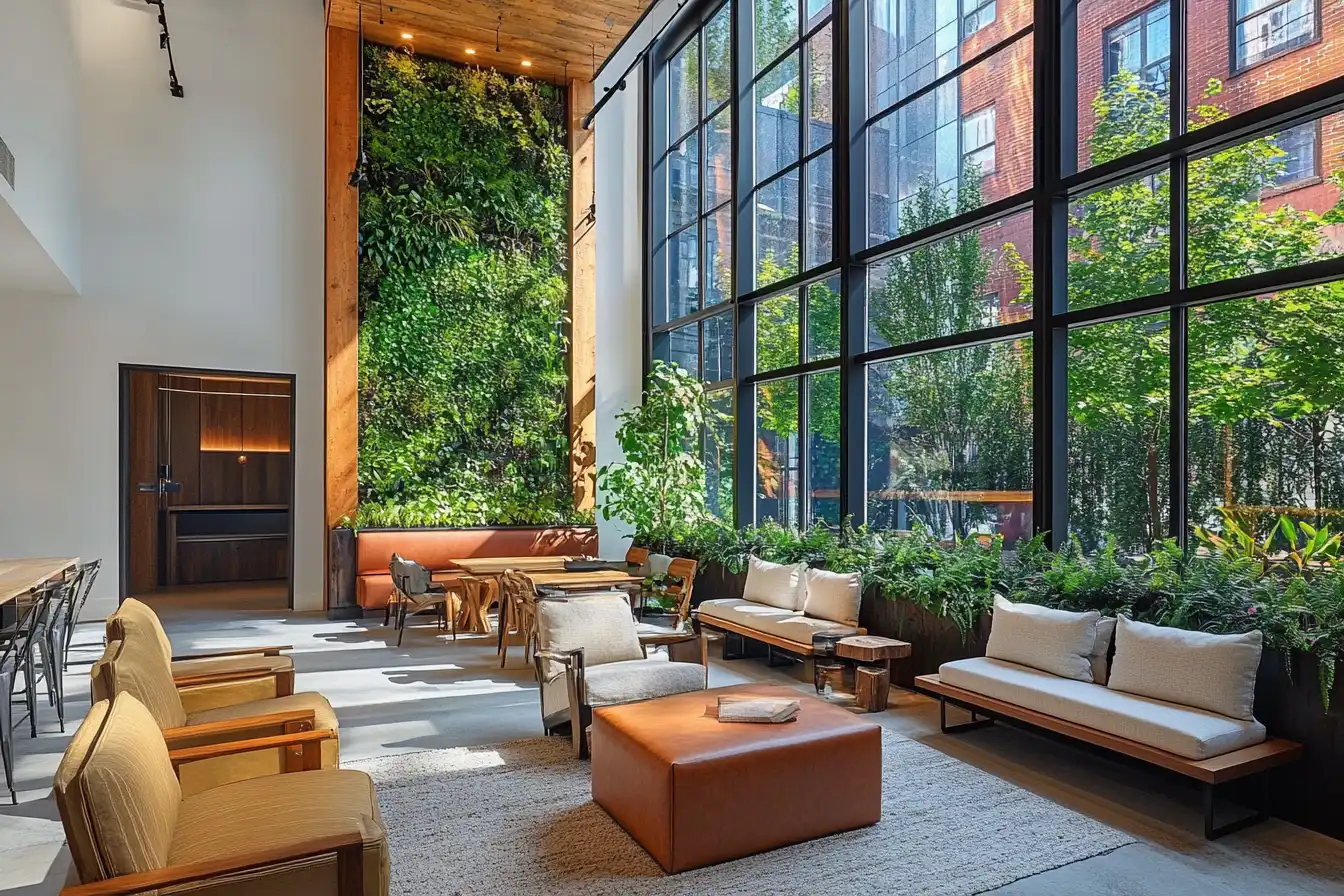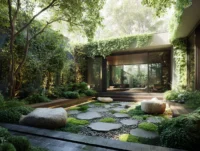Developing near the shoreline presents a unique set of challenges and responsibilities. Projects in such locations often face pressure from investors to construct large, imposing buildings, which can compromise the integrity of the natural landscape and historical context. The Baltycki Apartments, designed by Maxberg, approach this challenge with a clear goal: to dialogue respectfully with the pre-war villa architecture of Świnoujście while harmonizing with the coastal dune landscape. The project demonstrates how thoughtful design can balance investor expectations, urban context, and environmental sensitivity.
Situated just 300 meters from the beach on a small, irregularly shaped plot, the development consists of two apartment buildings of five and seven stories. These buildings respond carefully to the local architectural language, drawing inspiration from the trapezoidal forms, roof slopes, and varied elevations of nearby historical villas. By referencing the organic contours of the Promenade of Health, the apartments maintain a visual dialogue with the existing urban fabric while respecting the coastal environment.

Architectural Form: Trapezoids and Contextual Integration
The form and scale of the Baltycki Apartments are designed to blend seamlessly with their surroundings. The buildings employ trapezoidal projections and carefully shaped rooflines that echo the pre-war villas in the vicinity. These design choices not only reinforce the historical character of the area but also articulate the organic rhythm of the shoreline promenade.
The contours of the apartments also correspond to the nearby former “Fregata” Nursing Home, a listed historic building, ensuring that the new development maintains a sensitive relationship with heritage architecture. Rather than imposing a monolithic presence, the design celebrates variation, layering, and scale, integrating the buildings into the natural dune topography while preserving visual connections to the beach and surrounding urban context.

Structural Strategy: Prefabrication and Complexity
The Baltycki Apartments are notable for their hybrid construction strategy, which combines traditional and modern building techniques. The underground portion, housing utility rooms and garages, is constructed from poured concrete on site, providing stability and durability. Above ground, the project employs a clever mix of prefabricated concrete, steel, and wood, forming the skeleton, walls, roof, staircases, and balconies.
The prefabricated approach was essential given the complex geometry of the project, including truncated roofs and trapezoidal rooms whose layouts vary from floor to floor. This combination of materials and techniques enabled precise control over construction quality while responding to the irregular forms required by the design. The result is a development that balances structural efficiency, aesthetic coherence, and contextual sensitivity.

Interior Design: Natural Materials and Comfort
Inside, the apartments emphasize warm, tactile materials that complement the coastal setting. Wood finishes, soft lighting, and thoughtfully designed balconies create a sense of comfort and connection to the outdoors. The interplay of natural light and spatial variation enhances the interior experience, reinforcing the relationship between building, landscape, and resident.
The interiors are designed to adapt to a variety of lifestyles, offering flexible layouts while maintaining a consistent design language that reflects the regional context and historical references. This attention to interior quality ensures that the apartments provide both functional efficiency and a visually and experientially engaging environment for residents.

Design Coordination and Execution: A Complex Undertaking
The Baltycki Apartments represent a highly coordinated architectural effort. Five independent construction offices were involved in the project, which required meticulous design logistics and contractor coordination. The irregular forms, prefabricated elements, and combination of materials demanded precision in planning and execution. Despite these challenges, the project achieved a cohesive architectural expression that honors both context and innovation.
This rigorous coordination extended to every detail, from structural systems to finishes and spatial organization. The collaboration between architects, engineers, and contractors ensured that complex trapezoidal forms and prefabricated components were accurately realized, demonstrating Maxberg’s commitment to high-quality architecture in challenging contexts.

Dialogue with Heritage and Landscape
At its core, Baltycki Apartments exemplify a sensitive approach to heritage and landscape integration. The design respects pre-war architectural forms, aligns with the natural dune topography, and engages with the surrounding urban environment. By referencing historical villas, maintaining human-scaled proportions, and incorporating natural materials, the apartments create a harmonious balance between tradition and contemporary living.
This thoughtful approach ensures that the development does not dominate the shoreline but instead enhances the architectural character and cultural continuity of Świnoujście. The project illustrates how contemporary architecture can be contextually responsive, environmentally aware, and socially considerate, achieving both functional excellence and aesthetic integration.
Baltycki Apartments stand as an exemplary case of coastal residential architecture, demonstrating the potential to combine innovative design, material sophistication, and historical respect while navigating the constraints of sensitive shoreline development.
Photography: Sylwia Gudaczewska
- Adaptive Urban Design
- Baltycki Apartments
- coastal residential architecture
- Contemporary residential design
- contextual architecture
- dune landscape integration
- historic architecture dialogue
- human-scale proportions
- hybrid building techniques
- interior design natural materials
- Maxberg Architects
- pre-war villa inspiration
- prefabricated construction
- residential building innovation
- roof slope variation
- sensitive coastal development
- shoreline urban context
- sustainable coastal development
- Świnoujście architecture
- trapezoidal building forms
























































Leave a comment